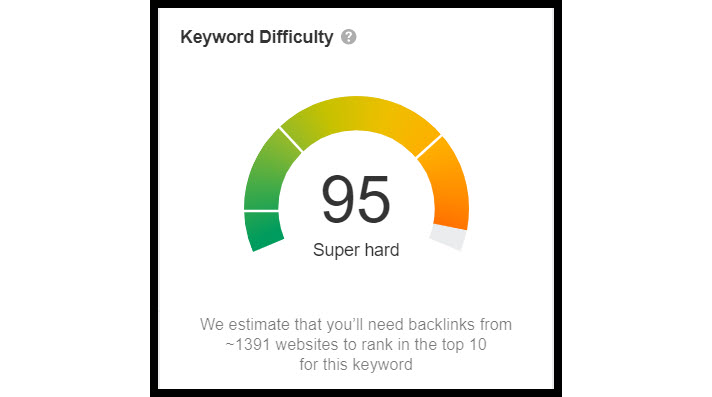I know it makes me sound like kind of a psycho nerd, but I LOVE keyword research.
I’m starting to HATE keyword difficulty metrics, though.
Even SEO tool providers will tell you to take any metrics or grades with a grain of salt. “Directionally indicative” is a phrase I use a lot when it comes to most non-revenue / lead / traffic SEO KPIs. They’re telling you how competitive the first page is, you may not be able to rank number 1 even in a low difficulty SERP, etc. etc. etc.
BUT – at the risk of going very get-off-my-lawn here – it wasn’t always this way!
Years ago, if you found a high volume search term with a low keyword difficulty according to tools like Ahrefs, Moz, or SEM Rush (but especially Ahrefs), my experience was that you could reliably get even new sites with relatively few links to start to rank for that term pretty quickly. It almost felt like a cheat code.
I don’t feel like that’s remotely the case anymore!
I’m Not Alone!
I’ve been seeing this more and more recently, but what spurred me to write this post is that I was listening to a terrific episode of the Niche Pursuits podcast with Anne Moss recently:
She made the point that it seems to be harder than ever to find low keyword difficulty terms these days, and that when you do they’re often much more “difficult” than the metrics would lead you to believe.
They discussed some great theories on why this is the case:
- SEO tools got very good at unearthing these types of terms, so everyone using the tools is rushing after the same types of terms.
- Affiliate sites that got hit in previous core updates are pivoting from best / review terms to informational terms.
- The problem is more pronounced in niches that people like (they used the example of pets on the podcast) because everyone starting out with niche sites jumps into pets or something similar due to the fact that they’ve been told to “write about what they love.”
Regardless of why, it does seem like low KD is less predictably “easy” for new or lower authority sites.
Example Time!
If you’re creating content you’re investing time, money, or both so the metrics you use to drive content creation matter.
Most SEOs (myself included) will perk up when they see a relevant term with healthy search volume and keyword difficulty scores like this:
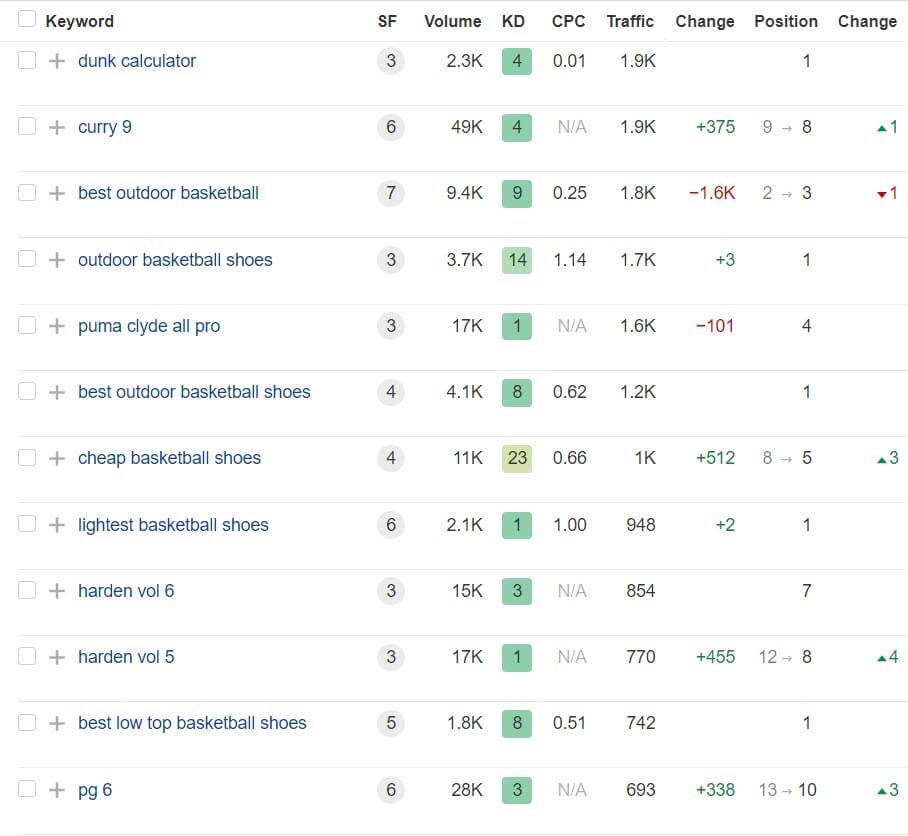
Green means GO, right?
Before you go building dunk calculators and reviewing shoes on your new basketball site, lets take a look and actually analyze one of these actual SERPs:
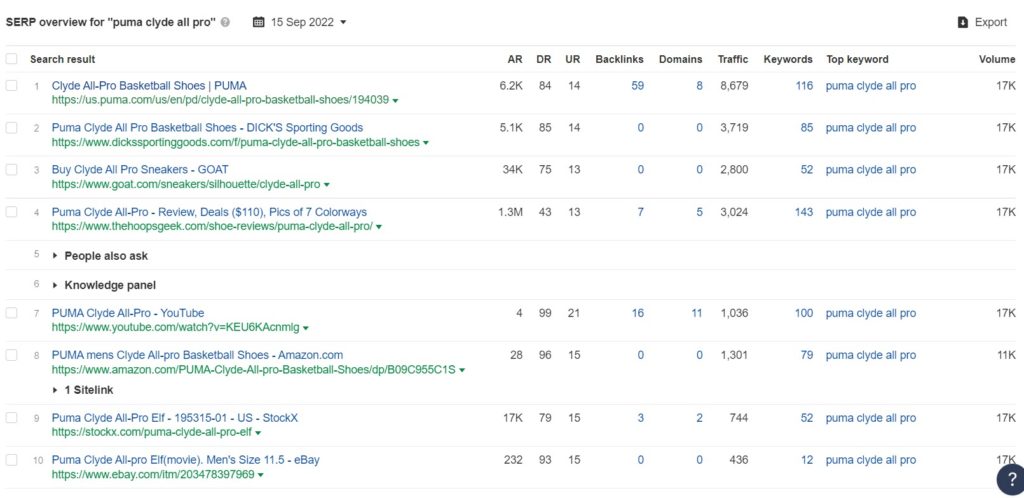
This was a KD 1 keyword! There are some wildly authoritative sites here! The Hoops Geek is in here with “only” a few thousand linking domains, but it’s still a DR 43 and highly relevant. If you have a brand new site, good luck sneaking in here (pun intended gang!).
A lot of these keywords are along the same lines.
I won’t even get into what the SERP looks like on mobile (so many images in the SERP!):
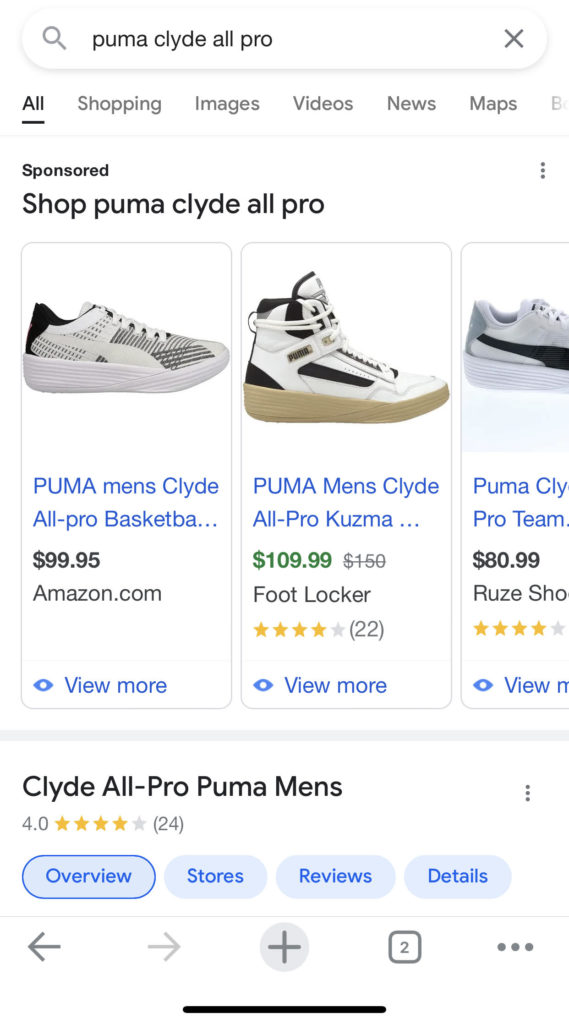
I had to scroll a full screen’s-length down 4 (!) times before I got to the Hoops Geek listing.
(I guess I did get into what the site looks like on mobile after all so I lied: sorry everyone).
Google cramming ads and features into your SERPs is nothing new (I’ve even written about it before and my all time favorite SEO blogger was writing about and predicting this eons ago) but if your site is new or link-poor, it’s even more egregious when paired with tons of high authority sites swamping what are supposed to be lower difficulty SERPs.
“Well that’s an eCommerce SERP Tom, they’re not all like that.”
Reasonable point, Imaginary Devil’s Advocate! Let’s look at some other search results.
A B2B Example!
The poor B2B keywords never get any shine in these posts with examples of keywords (its always pets!).
That changes now.
Let’s say we have a Kubernetes startup:
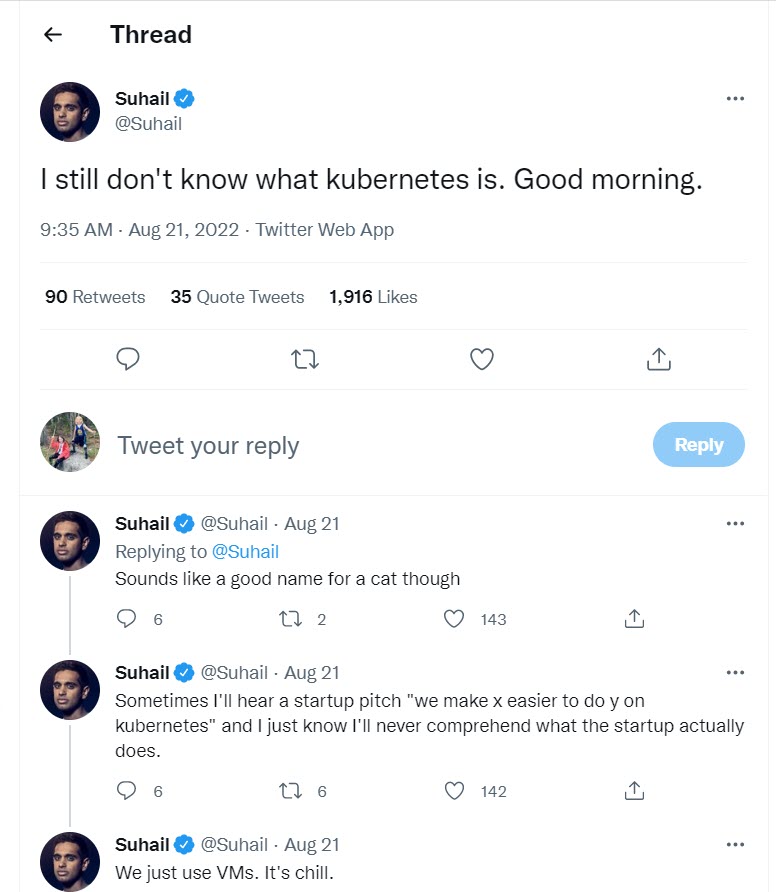
I will admit: I work a lot in both B2B and consumer SERPs, and I see examples like the Puma Clyde All Pro highlighted above in general, consumer-oriented SERPs all the time. I see it play out like that exactly less in B2B SERPs.
Still:
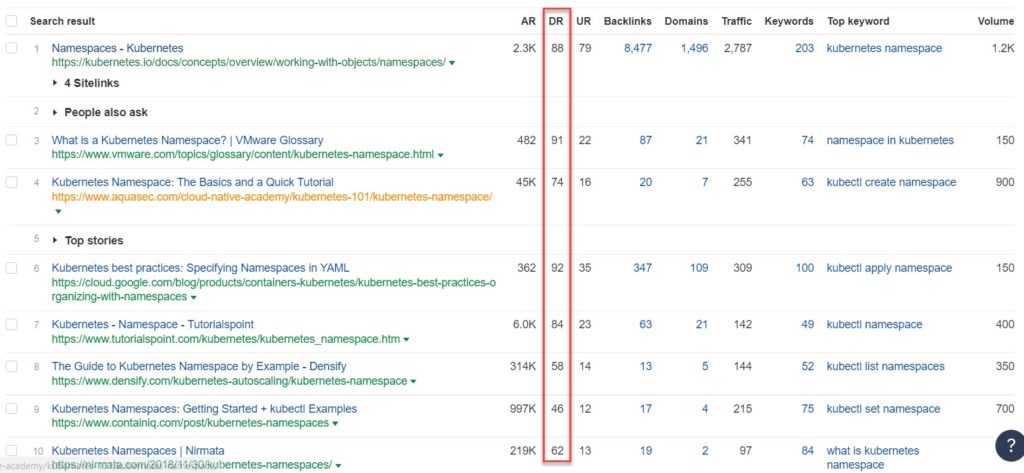
Pretty tough sledding for your brand new domain!
Another thing I’ve noticed with these “low KD” SERPs is that you often have several very authoritative sites taking the top spots, with a “token” low DA site or two sneaking in in position 5 or position 8 or something.
Like this one (KD 5):

Or this one (KD 2):
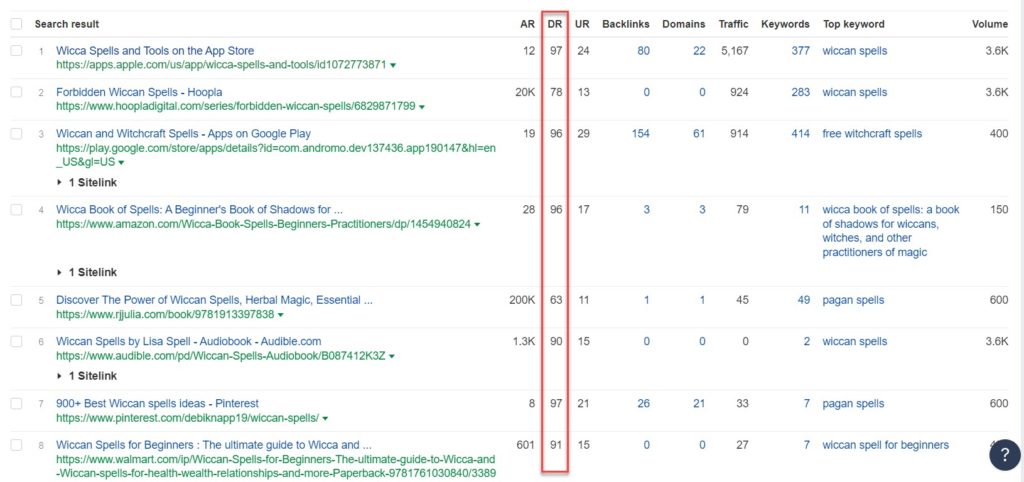
Almost like Google is telling the algo to sprinkle a few of these in in case they get called out on only featuring high authority sites.
The reality is that while this is “low difficulty” it almost feels like you have to rank in one specific spot (like having to rank number 1 or be on the 2nd page, but without the benefit of the traffic a number 1 ranking gets). In other words: while there are technically 8 or 9 sites on the first page, only one site in your “neighborhood” authority-wise is going to graduate onto the first page.
And larger sites are coming for all of your super-low-difficulty-niched-down-keywords more and more, too. Especially in competitive niches (like pets!):
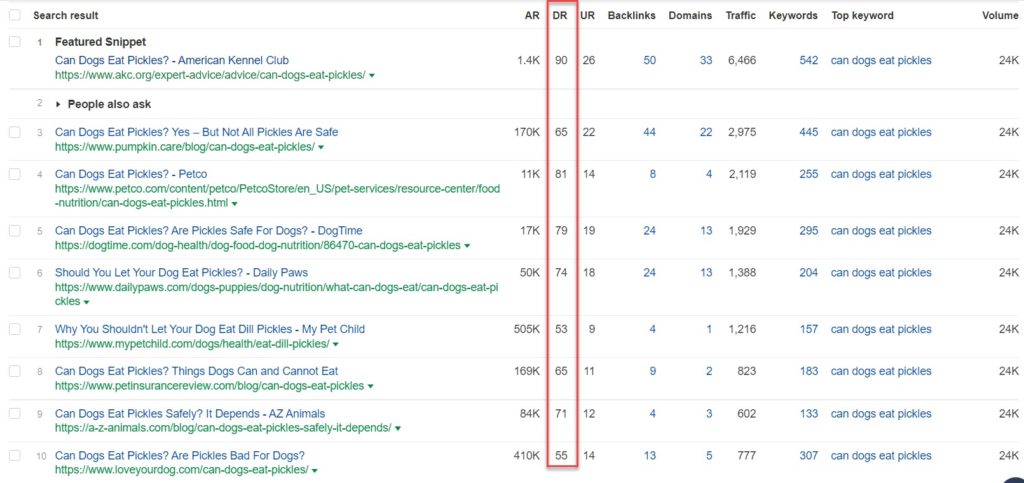
The above query leads to another somewhat recent reality where certain types of queries (like those that deal with human or pet health) seem to have an even higher authority threshold and/or the low authority sites that are “allow in” to a SERP are of a very specific type.
For instance you may have a term show as low difficulty, but the “low authority” (in terms of linking domains) results are all veterinary clinics. So while the keyword difficulty metric is low, it’ll still be very difficult for your new site to rank.
So What CAN You Do With Keyword Difficulty Scores?
“We get it Tom: you’re old, and things were better before, and SERPs are more competitive. So what?”
Settle down, Imaginary Devil’s Advocate.
But, you do have a point. So what? What should you change or do about all of this?
Keyword difficulty metrics are still really useful (I use them every day). Here are two core things you can do with them:
- Use them as a starting point for finding low competition keywords. Take your core topic and competitor sites, etc., sort by low difficulty (start with literally 0 and work your way up – even the 0-5 level may be impossible for newer sites these days!) then go term-by-term and look at the SERPs.
- Use them as a guide for terms to target for a more authoritative site. As your site is older and more authoritative you can obviously target different terms. Use the difficulty metrics, the estimates of how many links you’ll need, your own feel for the difficulty levels of terms you usually rank for, as well as SERP analysis to help choose your targets.
Beyond that, you may need to reconfigure your approach more broadly. There are a lot of ways to win at SEO. This reality presents some different options:
- Build More Links – If you have enough really high quality links on an old enough domain you can be one of the 8 or 9 instead of the 1 in some of the scenarios outlined above. Or, you’ll be much more likely to get that one open slot for a site with 2-10k linking domains.
- Dig Deeper – You can find ways to get even more granular with your keyword research to find terms that are low difficulty in more than KD scores alone (I’ll have more on this in a future post).
- Be More Patient – If you have the wherewithal (I say this a lot – again because I’m old – but that’s the first time I’ve written it out and had to Google it: wild spelling) can go deep on topic clustering and build topical authority, even if everything in the cluster isn’t something you can hope to rank for right away.
- Do Both! – Focus is great and works very well for lots of people in online publishing and SEO, but you can also take a hybrid approach and build more links while working working harder to dig deep and find some low difficulty topics.
I get that telling you to “build more links” and “find better keywords” in a post about SEO is like being the youth sports coach who tells his players they need to “score more points” or “play better defense.” I really do.
SO I’ll have some more tactical posts on each of those topics in the coming weeks.
